#CRISTINA BAUSSAN
Text
“To rebuild Notre Dame's fire-ravaged roof, carpenters use centuries-old techniques” writes Eleanor Beardsley
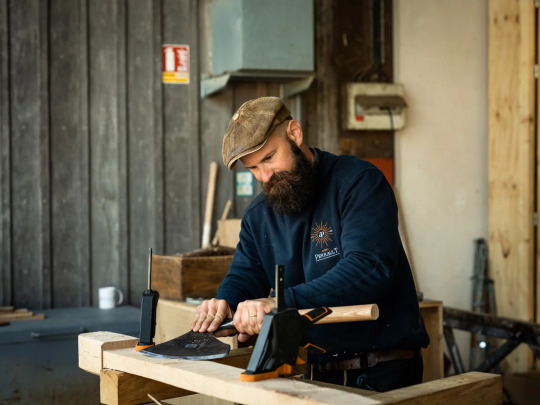
Edouard Cortes, one of Ateliers Perrault's carpenters, stands at his workstation. "I arrived here by one of those lucky meanders of life," Cortes says, referring to his participation in the restoration of the cathedral. Cristina Baussan for NPR
"We're restoring a medieval cathedral...[but] Notre Dame will also be a cathedral for the 21st century."
Using whole oak trees and tools newly forged to mimic those of 900 years ago, artisanal carpenters in France shape wood into massive triangular trusses as replacements for those that burned in 2019.
“At Ateliers Perrault, a 250-year-old carpentry company in France's Loire Valley — one of the two chosen to restore the roof — you don't hear the whirring of electric saws. It's the chopping of axes that resounds as craftsmen transform oak trees into long, rectangular beams by hand.
Carpenter Joseph Canuel explains: ‘We made cathedral roofs well before saws and sawmills existed, and this is how it worked,’ he says. ‘You got the wood in the nearby forest like we're doing. And sure, we could easily cut these logs into two boards, but keeping the wood fibers the whole length of the beam gives it more resistance.’"

The cathedral's facade is engraved on the axes used by carpenters at the Ateliers Perrault in Saint-Laurent-de-la-Plaine, France. Sixty axes were hand-forged for the reconstruction of the cathedral. Cristina Baussan for NPR
A “map” was made of the original structure in 2012, by a then-architectural student who, along with some fellows, spent a year under the roof taking measurements and doing scans. Those details provide a way to reproduce all the trussing, called “the forest,” for the new roof.
“...reconstructing it exactly the same way is also a precaution. It worked very well for 800 years. So we know if we build it back the same way we won't risk damaging the cathedral by trying something new."

Valentin Pontarollo, 29, one of the lead carpenters on Notre Dame's reconstruction, works on the beams that will constitute the cathedral's new framework. Cristina Baussan for NPR
Full story with audio
0 notes
Text
Notre Dame's fire-damaged roof is being rebuilt using medieval techniques : NPR
Carpenters at the Ateliers Perrault finalize the practice assembly of the charpente, or roof framework of the choir — the part of the cathedral that provides seating for the clergy and choir — on May 25. It extends nearly 50 feet long by 33 feet high.
Cristina Baussan for NPR
hide caption
toggle caption
Cristina Baussan for NPR
Carpenters at the Ateliers Perrault finalize the practice…

View On WordPress
0 notes
Photo
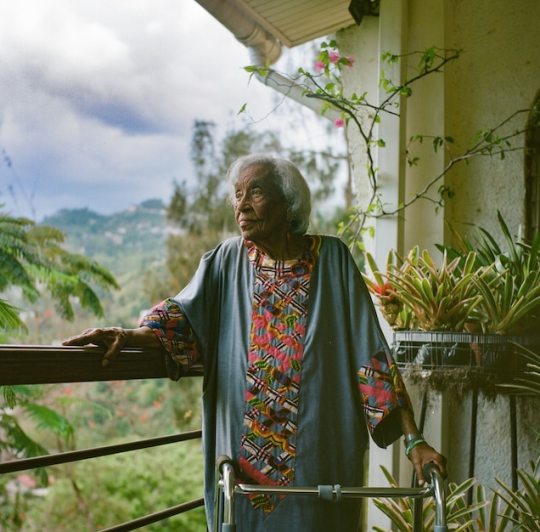
Odette Roy Fombrun, 104, on the balcony of her home in Port-au-Prince on July 15, 2021.
CRISTINA BAUSSAN
#CRISTINA BAUSSAN#Odette Roy Fombrun#balcony#port au prince#Haiti#hispaniola#greater antilles#caribbean#2020s#portrait#national geographic#elderly#women
51 notes
·
View notes
Photo
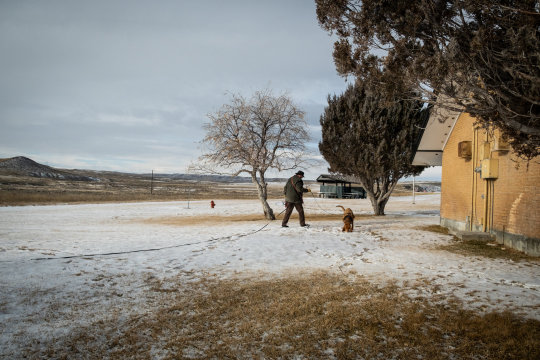
Rural Montana Had Already Lost Too Many Native Women. Then Selena Disappeared. For decades, with little public notice, Native women have gone missing or been found murdered. The search for Selena Not Afraid showed how much things had changed.. via NYT U.S.
0 notes
Text
Rural Montana Had Already Lost Too Many Native Women. Then Selena Disappeared. https://nyti.ms/37h2SjG
Rural Montana Had Already Lost Too Many Native Women. Then Selena Disappeared.
For decades, with little public notice, Native women and girls have gone missing or been found murdered. The disappearance of Selena Not Afraid is showing how much things are changing.
By Jack Healy, Photographs by Cristina Baussan | Published Jan. 20, 2020, 3:00 a.m. ET | New York Times | Posted January 20, 2020 |
BIG HORN COUNTY, Mont. — Jackie Big Hair slept in her car again, waking every few hours to fire up the engine and gaze at the frozen highway rest stop where her 16-year-old daughter had been reported missing.
“I just have to be here,” Ms. Big Hair, 50, said, watching semis lumber across the plains. “I don’t know where else to go.”
This was her vigil now, along with searches in Billings about 30 miles away, three weeks after her youngest child, Selena Not Afraid, was reported missing from a barren stretch of Interstate 90 in a southern Montana county where 65 percent of the population is Native American. Law enforcement officials said a van carrying Selena home the day after a New Year’s party in Billings had pulled into the rest stop after breaking down, and then reportedly started up again and driven away without her. Nobody had heard from her since.
A national outcry over the killings and disappearances of Indigenous women has reached a boiling point here in Big Horn County, a rural stretch of rolling mountains and ranch lands that contains the Crow and Northern Cheyenne reservations and has the highest rate of missing and murdered Native Americans in Montana, and among the highest nationwide.
Local activists had an incomplete count of 27 Native women who had gone missing in recent memory in Big Horn County alone. Now, there are 28. The difference here and in many parts of the West is that for decades the disappearance of mothers and children, cousins and friends almost invariably played out in utter obscurity, with modest law enforcement investigations that almost invariably languished unsolved.
Activists and researchers say the crisis burned unheeded for generations until a few years ago, when families’ stories of how their loved ones were sex trafficked, murdered with impunity or dismissed as chronic runaways gained traction through grass-roots organizing and social media, forcing politicians and law enforcement to take notice.
Last year, 5,590 Indigenous women were reported missing to the F.B.I.’s National Crime Information Center, but advocates say the staggeringly high rates of violence suffered by Indigenous people is still not fully reflected in official accounting. Some of the victims are misclassified as Asian or Hispanic, or are overlooked if they live in urban areas instead of reservations, or their cases are lost in a jurisdictional maze over which state, federal or tribal law enforcement agency bears responsibility for investigating.
Law enforcement officials said these can be extremely difficult cases to investigate, sometimes ranging over vast expanses of territory, but that they are committed to solving them. The families say the problem is more a matter of will and resources than of difficulty.
“Native women have been dehumanized from the very beginning,” said Desi Rodriguez-Lonebear, a demographer who grew up in Big Horn County and is on the board of the Sovereign Bodies Institute, which has created its own database of cases. “The law has failed us time and time again. We’re tired of it. We’re tired of our people dying, of our kids going to jail.”
Now, families like Selena’s are taking an urgent public stand to pressure politicians and law enforcement to provide more aggressive responses to these cases. They are raising alarms through social media and even bracing themselves against Montana blizzards to keep their loved ones from being forgotten. They are organizing candlelit vigils, rallying at courthouses and sheriff’s offices and marching for days along prairie highways, reservation roads and to the steps of state capitols.
“We’re here demanding it,” Selena’s aunt Cheryl Horn said one afternoon, warming her hands with a bowl of chili as volunteers returned from another fruitless search of the nearby hills. “We’re not being quiet. We’re not leaving.”
In recent months, a flurry of federal and state agencies across the country and here in Montana have raced to respond with task forces and law-enforcement resources, including a new Justice Department effort to coordinate federal and local responses to disappearances and murders in Indian Country.
Law-enforcement authorities say that Selena, a member of the Crow tribe, went missing at about 2 p.m. on New Year’s Day. A New Year’s Eve party in Billings had spilled over into the following afternoon, and she was riding back toward her home in Hardin, about 50 miles east.
According to local and federal law-enforcement alerts, the van broke down and pulled over at the rest stop, where Selena was last seen walking into a field. Her family believes she was taken, possibly by a passing car.
When her relatives heard the news, they began pouring into the rest stop, circling their cars and campers and horse trailers into a makeshift windbreak and transforming a frozen spit of asphalt and concrete into a scene of prayer and protest.
They lit a campfire, searched through ranchers’ fields and garlanded the fences and sign poles with red ribbons and posters of Selena. They saturated social media with calls for help. “Internet warriors,” one of Selena’s aunts called the response.
At 16, Selena already knew the toll of violence too well.
She had buried three siblings — a brother who had been fatally shot by Billings police officers; a sister who was struck and killed by a car; and her twin sister, who died by suicide when she was just 11 years old.
“I’ve always felt like there’s a bad presence against us,” Selena’s older brother, R.J., said. “I’ve expected the worst.”
After Selena was reported missing, police officers from South Dakota and Wyoming joined Big Horn County sheriff’s deputies, Bureau of Indian Affairs officers and volunteers to search the nearby hills. Federal and local law-enforcement officers set up a command center in the basement of the county courthouse. Thermal drones and helicopters buzzed overhead.
The F.B.I. issued an alert for Selena and sent in a search team, but agents and sheriff’s investigators have said little more about her disappearance, or whether they are investigating the older acquaintances who had been riding in the van with her. .
The swift response has surprised some activists. “Nothing moves that fast,” said BethYana Pease, a Crow community organizer.
Families and activists say they have been sounding these alarms for years. They say the crisis flows from generations of discriminatory government policies and racism in reservation border towns like Hardin that devalue Native women’s lives and deaths.
Jay Harris, the county prosecutor, who is a member of the Crow tribe, said the proliferation of meth use and a scarcity of federal law enforcement had exacerbated the problem. Last November, the Crow chairman declared a state of emergency over what he called ineffective investigations and unanswered police calls on the 2.3 million-acre reservation, and said the tribe would move to form its own police force.
Some victims’ families wondered why the deaths and disappearances of their own mothers, sisters and nieces had not sparked a similar outcry. Ms. Pease ticked off names she said had never received justice: 14-year-old Henny Scott, who was found dead two weeks after she went missing in December 2018. Bonnie Three Irons, a mother of six, whose body was found in the mountains in April 2017.
Or 18-year-old Kaysera Stops Pretty Places. It was late August when Kaysera went out with friends in her hometown, Hardin, the county seat. Four days later, a jogger found her body in a suburban backyard next to the house where she had been that evening, just steps away from a busy road.
“Where the hell were these big shots when my granddaughter was missing?” asked Carmelia Brown, a relative who said she loved Kaysera as a granddaughter.
Kaysera’s family believes she was murdered, but her cause of death has lingered undetermined for four months, her autopsy still unfinished. Her family says it has never been told a certain time of death. The case is classified as “Suspicious” and still being investigated, said Mr. Harris, the county attorney.
Kaysera’s family members wondered how she could have lain in someone’s lawn for days without being seen. They were troubled that her body had been shuttled back and forth between the funeral home and state crime lab before being cremated by the county coroner, who is also the funeral director. They were disturbed that one of the lead investigators into Kaysera’s death had also been involved in an incident in which her younger brother was beaten and forcibly restrained.
“Why does nobody care about this?” asked Grace Bulltail, one of Kaysera’s aunts and an assistant professor of engineering at the University of Wisconsin-Madison. “We’re not being given any information.”
Family members were uncertain whether Kaysera and Selena knew each other, but their stories have become intertwined. When Kaysera’s family led marches to the county courthouse seeking answers into her death, Selena attended, her aunt Cheryl Horn said. She posted Facebook tributes to Big Horn County’s missing and murdered Indigenous women.
One morning at Selena’s roadside vigil, as one of her great-aunts lit the day’s fire, her overcoat swung open to show a red sweatshirt bearing Kaysera’s face.
“This is the justice that Kaysera didn’t get,” Ms. Horn, Selena’s aunt, said.
*********
#crime#sex crimes#true crime#criminal justice system#criminal justice#criminality#women's rights#native american#indigenous#Women's issues#Missing persons#fbi#u.s. news#u.s. department of justice#justice department#justicedept#united states department of justice#justice#u.s. politics#politics and government#us politics#politics#republican politics
41 notes
·
View notes
Text
A New Tribe
As I reflect on the past two weeks spent traveling and working with fellows from around the world, I realize how much this experience has made me grow – both personally and professionally. As journalists, the majority of our time is spent alone: planning projects, reporting in often difficult environments, editing at home or in coffee shops. We get used to the silence around us and keep moving forward, always eager to make our next story better than the last. We convince ourselves that we can do this alone, that there is no time to ask for help. Up until now, I lived anchored in the belief that if I couldn’t figure it out on my own, it probably meant that I was doing it wrong.
On the very first day of the reporting trip, this dangerous misconception crumbled to the ground. I was in complete awe of the talent and kindness that surrounded me. As an introvert that finds comfort in solitude, I never thought that having a group of experienced, caring women around me – a tribe, as we like to call it – would make such a huge difference in my life. We all come from different backgrounds, have been shaped by different life experiences, cover different topics in our reporting and yet, we all share a common truth: we wholeheartedly immerse ourselves in the hardships of others, hoping, through our work, to leave people’s lives better than we found them.
Constantly exposed to humanity’s suffering and injustices, our work can easily take a heavy toll on our own lives, unless self-care becomes an absolute priority in our routines. The meaningful friendships created on this trip have become essential elements of my own well-being. I now know that challenges do not necessarily need to be faced alone; there are peers out there who want to listen and offer advice. I’ve learned to take myself less seriously, deeply rooted in the knowing that my work comes from the heart and that laughing endlessly to fellows’ stories is healthy for the mind. Most importantly, however, the experience of finding my tribe while reporting in a country filled with both life-threatening chaos and inextricable beauty, brought to me the greatest gift of all: meeting kind-hearted women journalists who genuinely want to see you succeed at work and at life, and who are prepared to give their all to help you get to where you want to be.
by Cristina Baussan
1 note
·
View note
Text
Rural Montana Had Already Lost Too Many Native Women. Then Selena Disappeared.
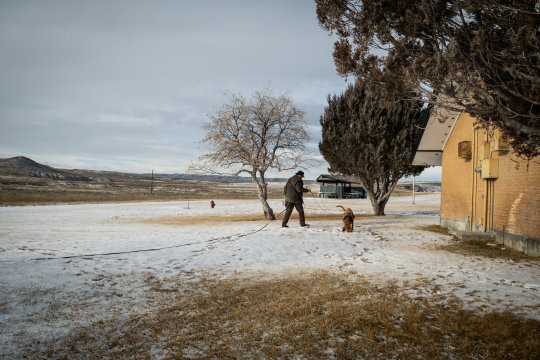
By JACK HEALY and CRISTINA BAUSSAN via NYT U.S. https://ift.tt/3asW2ti The New York Times
from Blogger https://ift.tt/2NLUwZw
0 notes
Photo
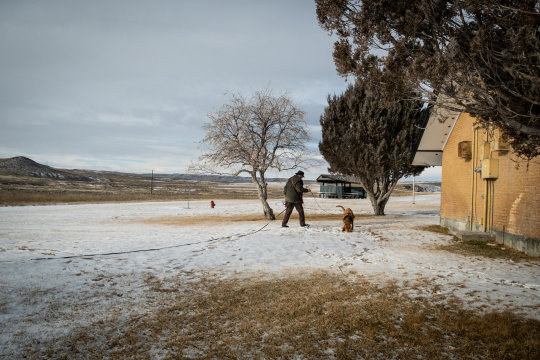
Rural Montana Had Already Lost Too Many Native Women. Then Selena Disappeared. JACK HEALY and CRISTINA BAUSSAN https://ift.tt/36em7ZN
0 notes
Photo
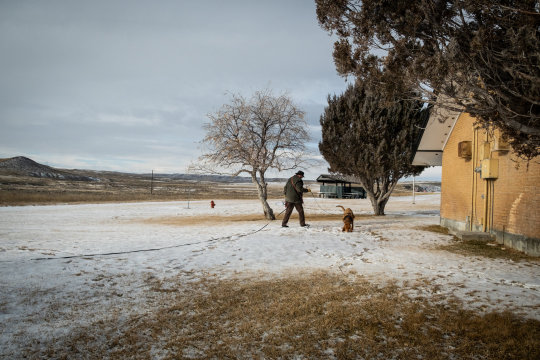
"Rural Montana Had Already Lost Too Many Native Women. Then Selena Disappeared." by JACK HEALY and CRISTINA BAUSSAN via NYT U.S. https://www.nytimes.com/2020/01/20/us/selena-not-afraid-missing-montana.html?partner=IFTTT
0 notes
Photo

Rural Montana Had Already Lost Too Many Native Women. Then Selena Disappeared. by JACK HEALY and CRISTINA BAUSSAN http://bit.ly/30Cl9Fw
0 notes
Photo

"Rural Montana Had Already Lost Too Many Native Women. Then Selena Disappeared." by JACK HEALY and CRISTINA BAUSSAN via NYT U.S. https://www.nytimes.com/2020/01/20/us/selena-not-afraid-missing-montana.html?partner=IFTTT
0 notes
Photo
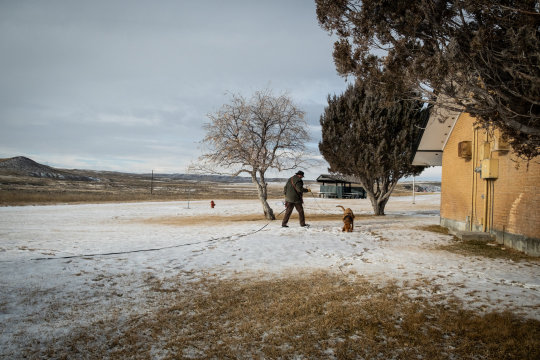
"Rural Montana Had Already Lost Too Many Native Women. Then Selena Disappeared." by JACK HEALY and CRISTINA BAUSSAN via NYT U.S. https://www.nytimes.com/2020/01/20/us/selena-not-afraid-missing-montana.html?partner=IFTTT
0 notes
Photo

"Rural Montana Had Already Lost Too Many Native Women. Then Selena Disappeared." by JACK HEALY and CRISTINA BAUSSAN via NYT U.S. https://www.nytimes.com/2020/01/20/us/selena-not-afraid-missing-montana.html?partner=IFTTT
0 notes
Photo

Faïka Lionel (left) is one of the 300 students of the Foyer Maurice Sixto school, which offers educational courses in the morning and craft lessons in the afternoon. Faïka chose sewing when this photo was taken in 2018, hoping that one day she will design dresses for young girls in Port-au-Prince.
CRISTINA BAUSSAN
#CRISTINA BAUSSAN#Faïka Lionel#students#Foyer Maurice Sixto#school#education#2010s#fashion#port au prince#haiti#hispaniola#greater antilles#caribbean
23 notes
·
View notes
Photo

"Rural Montana Had Already Lost Too Many Native Women. Then Selena Disappeared." by JACK HEALY and CRISTINA BAUSSAN via NYT U.S. https://www.nytimes.com/2020/01/20/us/selena-not-afraid-missing-montana.html?partner=IFTTT
0 notes
Photo
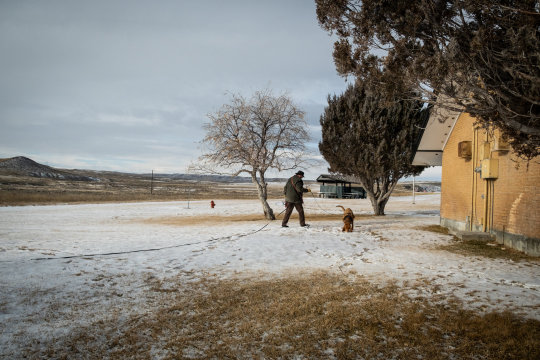
"Rural Montana Had Already Lost Too Many Native Women. Then Selena Disappeared." by JACK HEALY and CRISTINA BAUSSAN via NYT U.S. https://www.nytimes.com/2020/01/20/us/selena-not-afraid-missing-montana.html?partner=IFTTT
0 notes